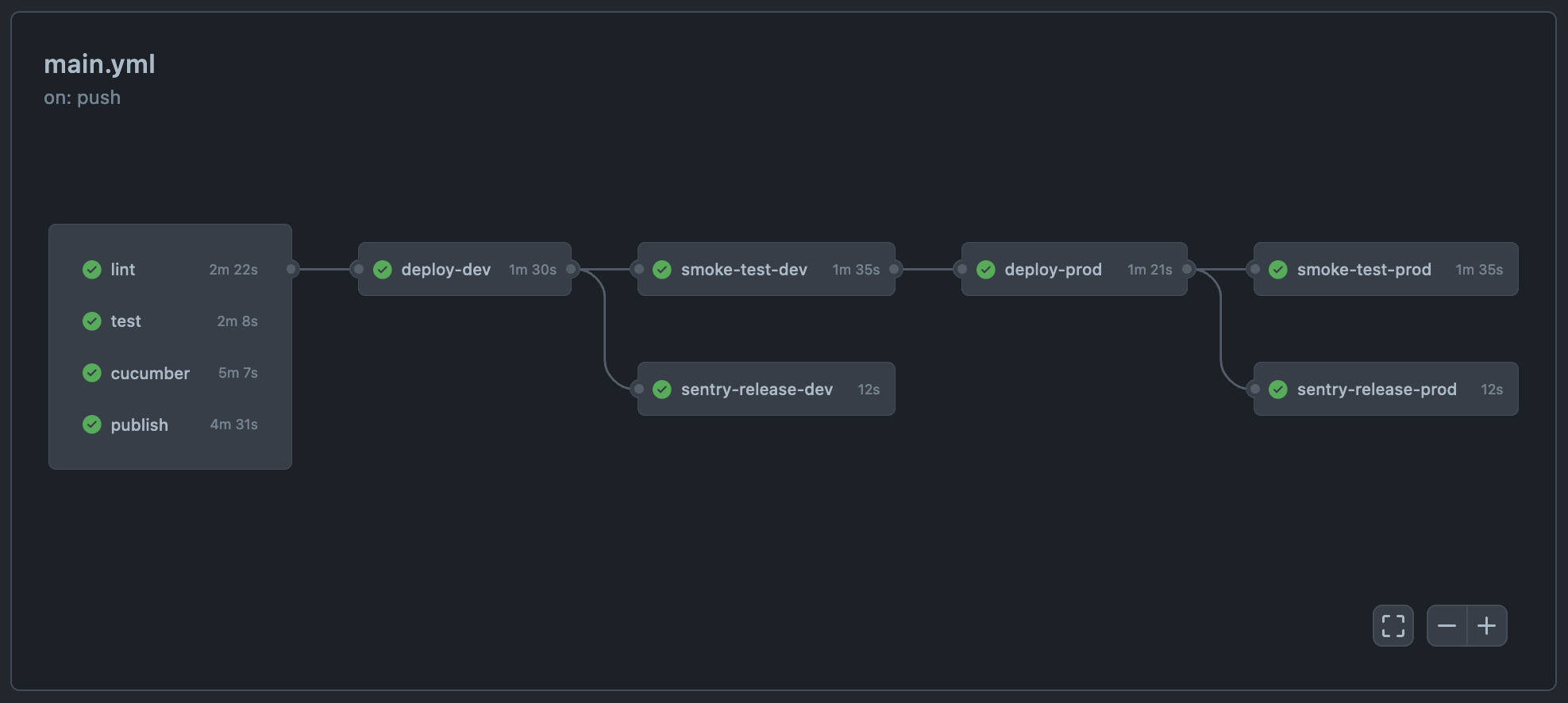Prod Deployment on Day One
Deploying to production on day one is a simple policy that helps teams think holistically about the efficiency of the tools and processes they use for delivering software. There are specific techniques we can apply to help make this policy achievable.
Why Deploy on Day One?
Getting new engineers to go from zero to production on day one has clear benefits to newcomers: they get productive with code sooner and they get exposed to the team’s delivery tooling and culture. But maintaining such a policy has other ongoing benefits for the whole team.
Delivering any change to production requires executing a reproducible sequence of steps. A day-one change is like a tracer through those all of the steps, even the ones that are not repeated often. It can highlight bottlenecks in the developer onboarding process and the software delivery pipeline.
A smoother local dev setup process helps the team to minimize the occurrence of “works on my machine” type of issues and it lowers the bar for contributing to different parts of the code base.
A successful deployment of a small change shows the delivery pipeline is in a healthy state. Any change can easily be held up by work in progress that is not ready to be deployed to production. A team with a disciplined approach to minimizing work in progress will avoid such blockers and work quickly to resolve them.
Techniques to Enable Deployment on Day One
The following techniques are the main ones that I have found to be effective at creating a development environment that supports the practice of deploying to production on day one.
Guide for new engineers
Create and maintain a day-one guide for new engineers to follow. Encourage newcomers to critique and improve the guide. The guide should include instructions for getting access to and running code.
CI/CD Pipeline
There should be a continuous delivery pipeline to make deployment to production automated and safe. The delivery pipeline has automated tests and post-deployment checks.
Example pipeline execution:

The team should have a culture of getting changes into production quickly, verifying them, and responding to errors and alerts.
Pull code with one command
Make it easy to pull all code across all code repositories. Android Repo Tool and MyRepos are two tools which make it easy to solve this problem in a standard way.
Example execution of Repo Tool to update 18 Git repositories:
$ repo sync
remote: Enumerating objects: 5, done.
remote: Counting objects: 100% (5/5), done.
remote: Compressing objects: 100% (2/2), done.
remote: Total 3 (delta 1), reused 3 (delta 1), pack-reused 0
Fetching: 100% (18/18), done in 9.268s
repo sync has finished successfully.Trivial First Change
Define a trivial one-line change that all engineers can perform as their first change. The change should be easy to observe and verify in production. Adding a line to humans.txt is a good option.
Example commit history for humans.txt:
$ git log --oneline public/humans.txt
1e573e8 Add my name to the list of awesome humansReadme in every repo
Every code repository should contain a readme file. The readme should summarize the purpose of the repo and specify the minimum steps to install dependencies, start the application and run automated tests.
Example minimal README.md:
# Galactus
The monolithic API server.
## Run Unit Tests
yarn install
yarn test
## Run Application
docker compose run script yarn install
docker compose up
## Run Feature Tests
docker compose run cucumber yarn cucumber
Without these basic instructions, we rely on knowledge of conventions based on the tools in use. Not everyone will be familiar with tools or their conventions. Variants in the commands tend to emerge as tooling evolves too. Regardless of how obvious these basic commands seem, they should be listed in the readme.
Docker First
Run backend applications within Docker and standardize the steps for running and testing any application. Steps should generally be like this: a) install dependencies, b) run “docker compose up”, and c) run feature tests.
Use real databases within the local Docker environment. Don’t depend on technologies that cannot run locally in Docker.
Docker might not be necessary for frontend single-page applications which do not require other services to be running locally. Instead, a tool like Cypress can be used to provide all the dependencies required for testing.
Stubbed Local Dependencies
Local Dockerized development environment should not call out to real services. Instead, use Wiremock or similar to stub out the interactions. Stubbed dependencies include not just third-party APIs but also internal APIs that are managed as separate deployables.
Frontend applications can depend on real services for local development but API endpoints should be mocked when running test automation.
Port Assignments
Assign unique local ports to prevent applications from failing to start due to port conflicts when multiple applications are running. Register ports centrally in your internal documentation tool.
Example port assignments:
| App | Web | Debugger | Proxy | Redis |
|---|---|---|---|---|
| racoon | 12180 | 12129 | 12188 | |
| wingman | 12280 | 12229 | 12288 | |
| galactus | 12380 | 12329 | 12388 | 12379 |
Exposing ports to the local host allows developers to more easily interact with the running services with their preferred debugging tools.